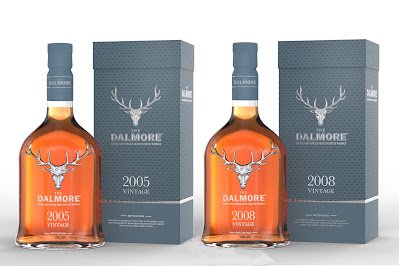This single malt whisky is the latest addition to the Wine Cask Collection from the Highland distillery of Aberfeldy. The Wine Cask Collection whiskies are created by Stephanie Macleod, the Malt Master for Aberfeldy. This latest edition - the Aberfeldy 21 years old Malbec Cask Finish - has seen the brand partner with Finca Ambrosia, an organic winery located in the Uco Valley in Mendoza, Argentina.
The batch of single malt used was distilled in November 2001 and matured for over two decades in first-fill ex-bourbon barrels and ex-sherry hogsheads. These casks were then combined and filled to French oak ex-Malbec wine casks that had previously held Finca Ambrosia’s Viña Unica expression.
The village of Aberfeldy is in the southern Highlands and the distillery is owned by John Dewar & Sons, a subsidiary of the Bacardi group. It is engrained in the history of the Dewar's blended Scotch brand - it was founded and built by John and Tommy Dewar in 1896 to make single malt for their popular White Label. This remains one of the world's best selling blends with a particular stronghold in America. The distillery has a current annual production capacity of 3.5 million and is home to the recently revamped Dewar's World of Whisky visitor experience.
The Aberfeldy 21 years old Malbec Cask Finish is bottled at 46% ABV and is both non-chill filtered and of natural colour. It is available from the distillery shop in the Highlands and in selected work markets. These include Australia, France, Germany, Singapore, Taiwan, the UK and USA. A bottle will cost £230/ US$280.
Our Tasting Notes
The colour is deep gold with a reddish amber tint and the nose is rich, sweet and aromatic. Caramel, fresh apricot and candied orange rise first and are quickly joined by further aromas of milk chocolate, dried cranberry and something floral. Underlying hints of espresso coffee, vanilla fudge and freeze dried raspberries are also evident.
On the palate this whisky feels instantly rich and malty. The bittersweet cereals come to the fore and are joined by sweet caramel, juicy apricot and dark dried fruits - think of raisin and sultana especially. The red fruit from the nose also begin to develop, as does an evolving note of orange oil. A hint of juicy tropical fruit sits in the background alongside some cocoa powder, milk chocolate and a suggestion of molasses.
The second half of the palate goes in a different direction. Woody notes and spices evolve and threaten to take control. A spiced peach and apricot compote-like characteristic is complimented by some white pepper, clove and cinnamon bark. Gingerbread and a scratch of nutmeg are also evident. Then the oak really comes through to create a woody dryness.
The finish carries on this theme with the sweeter and fruitier elements fading fast. This leaves the oak and spices to give a pleasant warmth and dryness - the gingerbread and cinnamon bark really come through now, as does some heavy tannins from the ex-red wine casks that leave your tastebuds parched.
What's The Verdict?
This is a delicious single malt from Aberfeldy and one that shows what ex-red wine casks can offer. The significant age of the whisky is complimented by the dried fruitiness, tannins and spices from its time in the former Malbec barrels. It does threaten to get too dry and tannic, but somehow just about holds its balance. The price is a little punchy and has crept up throughout the series (the previous bottling was half the price for an 18 years old), but well worth a try if you get the opportunity.


















